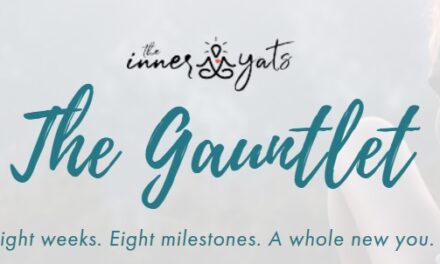The Tilt team ventured out from behind our screens into the real world at Content Marketing World 2024 in San Diego. Now, we’re bringing you some of the lessons and tips we learned from the expert speakers, including some Tilt Publishing authors, to help grow your content business.

So here are the highlights heard and observed by Tilt Publishing’s Laura Kozak, Kristen Moxley, and Marc Maxhimer:
We all thought R. Ethan Braden, vice president, chief marketing and communications, at Texas A&M, rocked his keynote with wise counsel. (Marc even went up to him later to tell Ethan he definitely has a book inside him.)
He outlined the four principles that matter to a brand. Follow them, and you will give your content business focus and gravitas:
- Great brands stand for something and someone. That means you must be OK with attracting – and repelling – audience members. What and who do you stand for?
- Great brands offer outcomes, not just features. People don’t just buy a drill; they buy it for its outcome (hole drilled for a hung shelf to display photos, which makes a spouse happy.) What outcome do you make possible?
- Great brands realize it’s about feelings, not facts. Envy, respect, fear, nostalgia, etc. What feelings do you want your content to convey?
- Great brands tell great stories. You should tell incredible stories that win your audience’s hearts and minds.
With the big-picture conversation done, we turned to the breakout presentations for some more helpful advice.
Motivate the win: People don’t like to lose. Instead of spelling out all the benefits of you and your content product, tell them what they would lose if they didn’t buy from you, says Nancy Harhut, author of Using Behavioral Science in Marketing. She suggests some of these calls to action, such as “Order today or pay more” and “Mistakes to avoid.” Also, instead of giving them a discount, give them a credit on their account with an expiration date.
Know the intent: Your intent is to grow a business, but what is your audience’s intent? Why would they buy from you? Josh Baez and David Fortino of Netline say intent data lets you understand a customer’s psychology. Explore their search queries, past engagements, content consumed, confirmed projects, etc. With that knowledge, you can better answer their question, “What’s in it for me?”
Wear the audience’s shoes: View your brand’s experience from the audience’s perspective, not what looks good on paper, says Wayne Partello, co-founder and CEO of Cuento Marketing. What do they get when they interact with your brand? Is it easy to access the webinar? Is the chat helpful? What will they experience at the event?
Get off script: Successful videos deliver authenticity when they seem less scripted. Reading a script requires looking down, and that engages viewers less than if the person is talking directly to them. That’s the advice from A. Lee Judge, co-founder of Content Monsta and upcoming Tilt Publishing author. Lee says viewers value genuine, timely content.
Use AI for content that doesn’t suck: John Battistini and Carolyn Albee of BOL Agency advocate for testing generative AI prompts and tweaking them to refine the results. Give the tools the proper context, such as “You are an entrepreneur who is writing for this target audience to get them to subscribe to this newsletter…” Among their other tips:
- Ask it to write at an eighth-grade reading level. That will generate a better response than telling it to be conversational.
- Tell it to change up a sentence or headline structure.
- Specify words not to use.
Prep for an AI assist: Jenny Magic, Tilt Publishing author of Change Fatigue:
Flip Teams From Burnout to Buy-In, reminded us that new tech doesn’t solve old problems. Instead, AI magnifies gaps. Given its ability to process large volumes of data to find patterns and deliver insights, you must first ensure your content is ready to be learned. To do that, remove redundant, outdated, and trivial content.
Flip the funnel: Instead of marketing first to build awareness, do it to cultivate customer loyalty, says Heather Rudúlph of Stoke and Katherine White of AARP. By considering customer loyalty as the first touch point, you can capitalize on the power of word-of-mouth marketing.
Don’t buy the hype: John Greely of Navu offers this great line when considering tech for your content business: “The best tool is the one you’re most comfortable using.”
About the author
Ann regularly combines words and strategy for B2B, B2C, and nonprofits, continuing to live up to her high school nickname, Editor Ann. An IABC Communicator of the Year and founder of G Force Communication, Ann coaches and trains professionals in all things content. Connect with her on LinkedIn and Twitter.










